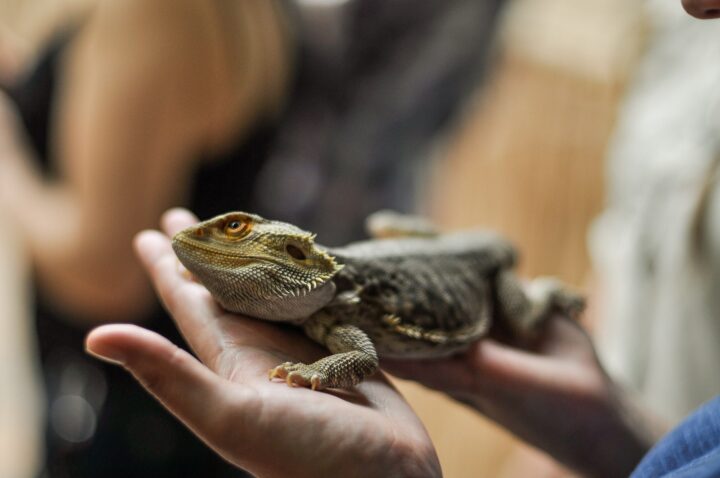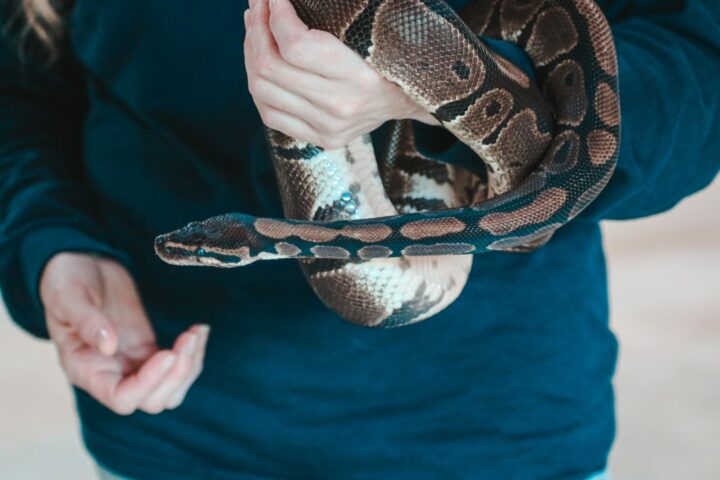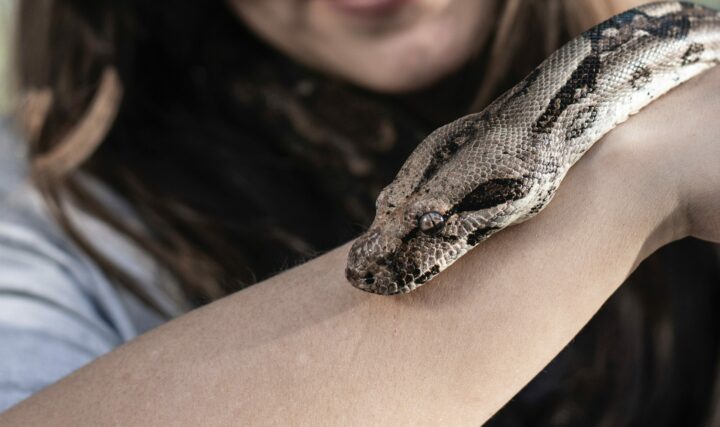As the popularity of reptile ownership continues to soar, it is essential for enthusiasts to be well-versed in the potential risks and safety considerations associated with keeping these captivating creatures at home.
From venomous species to environmental hazards, understanding how to create a safe haven for your scaly friends is paramount. Join us as we delve into the realm of reptilian companionship and explore the intriguing world of potential risks and safety measures.
Are certain reptiles more hazardous to keep than others?
While all reptiles require careful consideration and responsible care, it’s important to note that some species carry inherent risks that demand extra attention. Venomous reptiles, such as certain snakes or lizards, pose a higher level of danger due to their potentially toxic bites or stings.
It’s crucial to thoroughly research and understand the specific needs and potential risks associated with any reptile species you plan to keep as a pet, ensuring you have the necessary knowledge and resources to provide a safe environment for both you and your scaly companion.
What are the potential health risks for reptile owners?
Reptiles are fascinating creatures to have as pets, but it’s essential to be aware of the potential health risks that come with their ownership. Salmonella, a bacteria commonly found in reptiles’ digestive tracts, can cause severe illness in humans.
Therefore, proper hygiene practices, such as handwashing after handling reptiles or their habitats, are crucial to prevent the transmission of this bacteria.
Additionally, respiratory issues may arise due to poor air quality or exposure to allergens from reptile bedding or dander. By being mindful of these risks and taking necessary precautions, reptile owners can ensure a healthier and safer environment for themselves and their pets.
How can you prevent the spread of zoonotic diseases from reptiles?

To prevent the transmission of zoonotic diseases from reptiles to humans, a few key measures should be followed diligently. First and foremost, maintaining good personal hygiene is essential.
Thoroughly washing hands with soap and water after handling reptiles or their habitats is crucial to minimize the risk of infection. It’s also important to avoid activities such as kissing reptiles or allowing them to come into contact with your face or mouth.
Regular cleaning and disinfection of reptile enclosures, as well as separating reptiles from areas where food is prepared or consumed, further reduce the chances of zoonotic disease transmission.
Are there specific safety precautions to consider when handling venomous reptiles?
Handling venomous reptiles requires utmost caution and adherence to specific safety protocols. If you are an experienced reptile handler, always ensure you have the necessary training and knowledge to handle venomous species safely.
Use appropriate handling tools and equipment, such as snake hooks or tongs, to maintain a safe distance and minimize the risk of bites or stings.
It’s crucial to be aware of the reptile’s behavior and body language, avoiding any sudden movements that may provoke aggression. Additionally, wearing proper protective gear, such as gloves or arm guards, provides an extra layer of safety when dealing with venomous reptiles.
What measures should be taken to ensure escape-proof enclosures?
Creating escape-proof enclosures for reptiles is paramount to their safety and the prevention of potential harm to both the reptile and its environment. Begin by selecting an enclosure specifically designed for the species you are keeping, ensuring it has secure locks or latches.
Regularly inspect the enclosure for any gaps or openings that could serve as an escape route, paying close attention to the lid or doors.
Reinforce these vulnerable areas with sturdy materials and consider adding additional measures like escape-proof mesh or clips. By taking these precautions, you can rest assured that your reptile will remain safely contained within its enclosure.
How can you protect your reptiles from household hazards?
Keeping your reptiles safe from household hazards requires a proactive approach and careful attention to detail. Start by identifying and removing any toxic plants or substances that may be within your reptile’s reach.
Ensure that electrical cords, chemicals, and cleaning agents are securely stored and inaccessible to your scaly friends. Monitor the temperature and humidity levels in their enclosure, and avoid placing it in areas exposed to direct sunlight or drafts.
Regularly inspect the enclosure for any sharp edges or objects that could cause injury. By creating a hazard-free environment, you provide a sanctuary where your reptiles can thrive without unnecessary risks.
Are there any risks associated with using heat sources for reptile enclosures?

Using heat sources in reptile enclosures is essential to replicate their natural environment and maintain their overall well-being. However, it’s important to be aware of potential risks and take necessary precautions.
Ensure that heat sources, such as heat lamps or heating pads, are securely installed and properly maintained to prevent overheating or electrical hazards. Use thermostats to regulate temperature, preventing any extreme fluctuations that could harm your reptile.
Additionally, always provide a temperature gradient within the enclosure, allowing your reptile to thermoregulate by moving between warmer and cooler areas.
What safety considerations should be made when introducing different reptile species?
Introducing different reptile species into the same enclosure or habitat requires careful planning and consideration. It’s crucial to research and understand the compatibility between species, taking into account factors such as size, temperament, and habitat requirements.
Keep in mind that some reptiles are naturally solitary and may exhibit aggressive behavior when forced to coexist.
Providing separate enclosures with adequate space, hiding spots, and appropriate temperature gradients is often the best approach to ensure the well-being of all reptiles involved.
Are there potential dangers when feeding live prey to reptiles?
Feeding live prey to reptiles may seem like a natural choice, but it’s important to be aware of the potential dangers involved. Live prey can sometimes inflict injuries on reptiles during the hunting process, leading to bites or scratches.
Additionally, there is a risk of the live prey fighting back, potentially harming your reptile. To mitigate these risks, consider alternative feeding methods, such as offering pre-killed or frozen-thawed prey items.
This not only reduces the chances of injuries but also eliminates the stress and potential hazards associated with live prey. Always prioritize the safety and well-being of your reptile during feeding, ensuring a mealtime that is both nourishing and risk-free.
How can you create a reptile-friendly environment that minimizes stress and maximizes safety?
Designing a reptile-friendly environment is key to minimizing stress and maximizing safety for your scaly companions. Start by researching the specific needs of your reptile species, including appropriate temperature and humidity levels, suitable substrate, and adequate hiding spots.
Mimicking their natural habitat as closely as possible provides a sense of security and comfort. Ensure that the enclosure is properly secured with escape-proof locks or latches, and regularly inspect it for any potential hazards or sharp edges.
Consider providing environmental enrichment, such as branches, rocks, or artificial plants, to promote natural behaviors and mental stimulation.
Are there any potential risks associated with reptile breeding?
Reptile breeding can be a rewarding endeavor, but it’s important to be aware of potential risks and responsibilities. Breeding reptiles requires a deep understanding of the specific requirements and behaviors of the species involved.
It’s essential to ensure that both the male and female are in optimal health and condition, minimizing the risk of complications during the breeding process.
Additionally, breeding can be physically and emotionally demanding for reptiles, so it’s crucial to provide appropriate nesting areas and closely monitor their behavior throughout the process. Responsible breeding also involves having a plan in place for the care and placement of the offspring.
What are the best practices for handling and transporting reptiles safely?
Handling and transporting reptiles require careful consideration to ensure their safety and minimize stress. Always approach reptiles calmly and confidently, avoiding sudden movements or loud noises that can startle them.
When handling, support their body securely and avoid excessive pressure or squeezing. It’s advisable to wear gloves or use appropriate handling tools when dealing with larger or potentially aggressive species.
When transporting reptiles, use well-ventilated and secure containers that prevent escape and provide suitable temperature conditions. Avoid exposing reptiles to extreme temperatures, and ensure that the transportation period is kept as short as possible.
How can you identify and mitigate the risks of reptile aggression?
Reptile aggression can present risks to both their owners and other animals. It’s important to understand the signs of aggression and have strategies in place to mitigate these risks.
Learn to recognize body language cues, such as hissing, puffing up, or displaying dominance behaviors, which may indicate an aggressive response. If you notice signs of aggression, it’s crucial to give the reptile space and avoid further provocation.
Provide appropriate hiding spots and ample space within the enclosure to minimize territorial disputes. Consult with a reptile behavior expert or herpetologist if aggression persists or escalates.
Are there any safety considerations when interacting with reptiles during shedding or molting?

Interacting with reptiles during shedding or molting requires extra care and attention to ensure their well-being and safety. During these processes, reptiles may experience increased sensitivity and reduced vision, making them more vulnerable to stress or injury.
Avoid handling or disturbing them unnecessarily, as this can disrupt the shedding process and potentially lead to incomplete shedding or skin damage. Maintain proper humidity levels in their enclosure to facilitate smooth shedding, and provide a designated area with damp substrate for reptiles to aid in the removal of old skin.
If you need to assist with shedding, seek guidance from a reptile veterinarian or experienced reptile keeper. By respecting their natural shedding process and providing the right conditions, you promote their health and minimize any potential risks.
What steps should be taken to ensure the well-being of both children and reptiles in a household setting?
| Risks | Safety Considerations | Preventive Measures |
|---|---|---|
| Zoonotic Diseases | Regular handwashing after handling reptiles | Separating reptiles from food preparation areas |
| Aggression | Recognizing signs of aggression and providing appropriate hiding spots | Consulting a reptile behavior expert if aggression persists |
| Escape Risks | Ensuring secure enclosures with proper locks or latches | Regularly inspecting enclosures for gaps or openings |
| Health Risks | Avoiding live prey to minimize potential injuries | Feeding pre-killed or frozen-thawed prey items |
| Environmental Hazards | Removing toxic plants or substances from reptile’s reach | Regularly checking the enclosure for sharp edges or objects |
When introducing reptiles into a household with children, it’s crucial to prioritize the safety and well-being of both parties. Educate children about the appropriate way to interact with reptiles, emphasizing the importance of gentle handling and respecting the reptile’s boundaries.
Always supervise interactions between children and reptiles to prevent accidental harm or stress to the animals. Teach children proper hygiene practices, including handwashing after handling reptiles or their enclosures.
Additionally, ensure that reptile enclosures are secure and inaccessible to unsupervised children to prevent any potential accidents.
Last words
In conclusion, keeping reptiles as pets can be a fascinating and rewarding experience, but it comes with important responsibilities. Understanding the potential risks and safety considerations associated with reptile ownership is essential for creating a secure and enriching environment for both reptiles and their owners.
By being aware of the specific hazards, such as zoonotic diseases, aggression, or escape risks, and implementing the recommended safety measures, we can ensure the well-being and happiness of our scaly companions.
Remember, responsible reptile ownership involves continuous learning, proper care, and respect for these incredible creatures. Let us embark on this reptilian journey with knowledge, care, and a commitment to creating a safe haven for our reptile friends.




